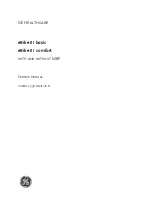
S service Sheet No. 1010 (contd.)
from the head tube by tapping it with a suitable punch round the outside edge. The top cup
can be
removed by
driving it from inside the tube, again using a suitable punch or drift. Replacements should be pressed on and into
the tube; make sure that they are set squarely before being driven well home.
Front Fork re-assembly
Assuming that a new fork is being built into the machine, first slide the dust cover over the two fork
tubes and secure with the centre bolt, washer and long steel plate. Pack the damper tube with as much "
Jetlube " grease as it will hold (an old cycle pump will be found useful) slide the damper rod, nut and
washer end first and screw in the disc valve at the lower end of the tube. Now slide the fork spring up the
other tube, secure with the bolt and washer through the fork crown, and replace the two shouldered washers on
the damper rod and spring stud so that the smaller diameters are at the bottom.
Screw service tool No. 61-5018 on to the end of the damper rod, but do not lock tightly, otherwise
difficulty may be experienced in removing the tool. Guide the service tool through the lower member, at the
same time guiding the fork spring through the other side. When the service tool is through, draw the damper
rod and the stud on the end of the fork spring scroll through the lower member, so that the domed nuts may be
fitted.
Remove the service tool from the damper rod and screw on the domed nut, holding the damper rod
with the screwdriver through the nut, and then refit the 'other domed nut to the spring stud.
Pass the brake cam spindle through the distance piece with the chamfered side towards the head of the
brake cam, place the brake lever on the outside and screw on the washer and nut. Pass the main spindle (if
removed) through the lower member, having first heated the member in hot water, and locate it by means of the
two flats. Replace the tab washer and screw on the locknut, turning the tab up on to the nut. Replace the
brake shoes with the narrow portion of the shoe next to the aluminium lower member. This can be done
by holding the shoes with the springs fitted in a V formation, then fitting them over the fulcrum pin and brake
cam by pressing outwards and downwards against the lower member.
Slide the brake drum into position over the spindle, refit the tab washer and the locknut, turning the tab up on
to the locknut when finally tightened.
The fork will now be ready for refitting to the steering head tube.
Grease both cups on the frame and apply 28 balls to the
lower cup; make sure that the rubber dust excluder is on the
bearing but high enough not to interfere with the fitting. Slide the
fork column up through the bearing and then, supporting the
fork, place 28 balls in the top bearing and refit the top cone
and dust cover. Replace the long key in the fork column,
slide the handlebar into position over the key and screw on
the two top locknuts by first screwing the lower nut
B
(Fig. 32)
down until the steering head adjustment is correct ; it should
be free to revolve without any appreciable up or down
movement. When the adjustment is correct, tighten the top
locknut ` A' and retighten the clip ' C' on the handlebar.
With the races assembled, draw the rubber dust cover
down on to the fork crown and replace the hub cap by
screwing in anti-clockwise.
Slide the twist grip over the handlebar, replace the
front brake and clutch cables and refit the dipper switch
and horn button by screwing in the two small screws.
Fig. 32.
Steering Head Adjuster.
Summary of Contents for TW2
Page 1: ......
Page 55: ...SERVICE SHEET No 1050 contd Wiring Diagram 6 Volt Model...
Page 57: ......
Page 58: ...i SERVICE SHEET No 1050 contd...
Page 61: ......
Page 66: ......
Page 73: ......
Page 74: ......
Page 75: ......
















































